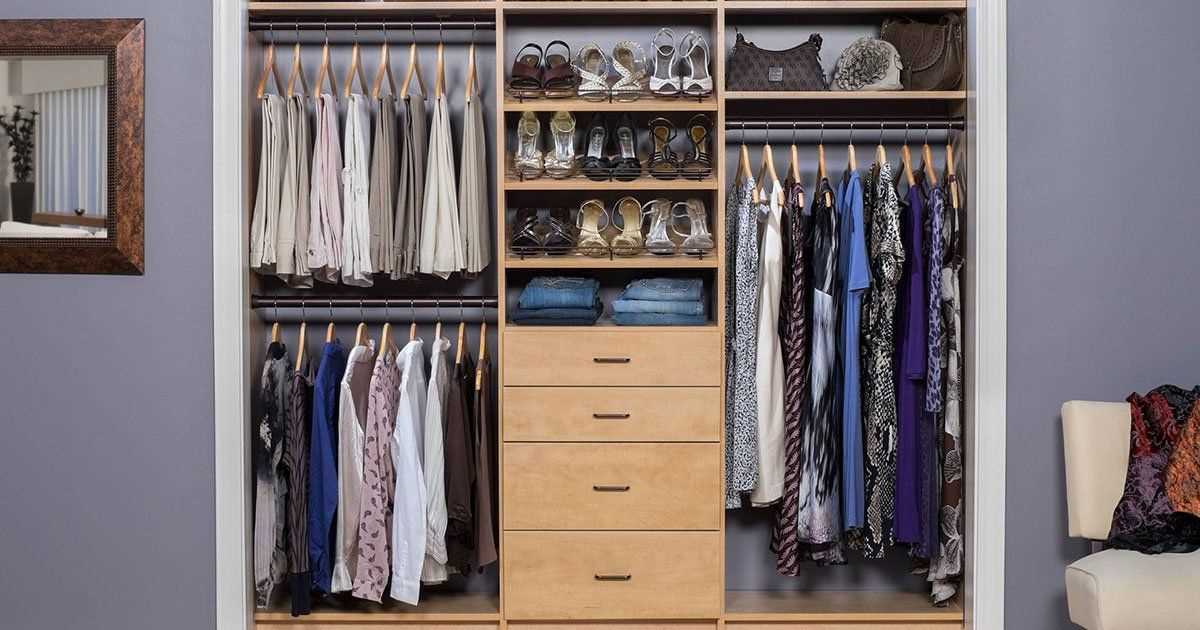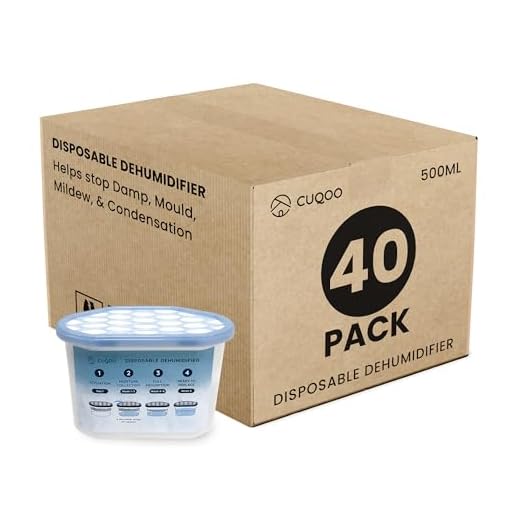




Moisture in wardrobes can be a common problem that affects many households. It not only creates an unpleasant smell but can also damage clothes and other items stored in the wardrobe. If left untreated, moisture can lead to the growth of mold and mildew, which can have negative health effects. Fortunately, there are several effective solutions to eliminate moisture in wardrobes and keep your clothes fresh and dry.
One of the most effective solutions is to use dehumidifiers. These devices remove excess moisture from the air, preventing it from condensing on your clothes and other items in the wardrobe. Dehumidifiers come in different sizes and capacities, so you can choose one that suits the size of your wardrobe. Another solution is to use moisture-absorbing products, such as silica gel or activated charcoal. These products can be placed in the wardrobe to absorb excess moisture and prevent mold and mildew growth.
Proper ventilation is also important in eliminating moisture in wardrobes. Make sure there is adequate airflow in and around the wardrobe by keeping the doors and windows open, if possible. It is also a good idea to avoid overcrowding the wardrobe, as this can restrict airflow and trap moisture. Additionally, using moisture-resistant materials for the wardrobe, such as plastic or stainless steel, can help prevent the buildup of moisture.
Natural Ways to Prevent Moisture in Wardrobes
Moisture in wardrobes can be a common problem, leading to damp and musty smells. However, there are several natural ways you can prevent moisture and keep your clothes fresh and dry. Here are some effective solutions:
1. Use Charcoal
Charcoal is a natural absorbent and can help eliminate moisture in wardrobes. Place a few pieces of charcoal in a bowl or fabric bag and put them in the wardrobe. The charcoal will absorb excess moisture and help prevent dampness.
2. Air the Wardrobe Regularly
Good ventilation is crucial for preventing moisture in wardrobes. Make sure to open the wardrobe doors regularly to allow fresh air to circulate. This will help dry out any moisture and prevent mold or mildew from forming.
3. Add Silica Gel Packets
Silica gel packets are commonly found in shoeboxes and other packaged items. These packets are great at absorbing moisture. Place a few silica gel packets in your wardrobe to help keep it dry.
4. Use Baking Soda
Baking soda is another natural moisture absorber. Place an open box or a small bowl of baking soda in your wardrobe to help absorb excess moisture and eliminate odors.
5. Avoid Overpacking

Too many clothes crammed into a wardrobe can restrict airflow and trap moisture. Avoid overpacking your wardrobe and leave some space for the clothes to breathe. This will also help prevent mold growth.
6. Get Rid of Damp Clothes
Damp clothes can contribute to moisture in wardrobes. Make sure to dry your clothes completely before storing them in the wardrobe. If you notice any damp clothes, remove them immediately to prevent moisture buildup.
7. Use Cedar Blocks
Cedar blocks not only provide a pleasant aroma but also help prevent moisture in wardrobes. Place some cedar blocks or cedar chips in your wardrobe to naturally repel moths and absorb moisture.
8. Avoid Plastic Covers
Plastic covers or bags can trap moisture and promote mold growth. Instead of using plastic covers, opt for breathable fabric covers for your clothes. This will allow air circulation and prevent moisture buildup.
9. Use a Dehumidifier
If your wardrobe is prone to excess moisture, a dehumidifier can be a great investment. A dehumidifier will help remove excess moisture from the air and keep your wardrobe dry.
10. Repair Leaks
If your wardrobe is located near a pipe or has a water leak, it can contribute to moisture problems. Make sure to repair any leaks to prevent moisture from entering the wardrobe.
11. Keep the Wardrobe Clean
A clean wardrobe is less likely to have moisture problems. Regularly dust and clean your wardrobe to remove any mold or mildew spores. This will help maintain a dry and fresh environment.
12. Use Natural Air Fresheners

Commercial air fresheners may contain chemicals that can worsen moisture problems. Use natural air fresheners such as lavender sachets or essential oils to keep your wardrobe smelling fresh without adding extra moisture.
By following these natural ways to prevent moisture in wardrobes, you can ensure that your clothes stay dry, clean, and free from musty odors. Remember to regularly check for signs of moisture and take necessary steps to address the issue.
Use Moisture Absorbers for Wardrobes
Moisture absorbers are an effective solution for eliminating excess moisture in wardrobes. These products are specifically designed to remove excess humidity and dampness in enclosed spaces such as closets and wardrobes.
Moisture absorbers work by using various chemical compounds that attract and trap moisture in the air. They come in different forms, including solid blocks, packets, and hanging bags, making them easy to use and place inside your wardrobe.
Here are some benefits of using moisture absorbers:
- Prevent mold and mildew: Excessive moisture in wardrobes can create a favorable environment for mold and mildew growth. Moisture absorbers help prevent these issues by reducing the humidity levels.
- Eliminate musty odors: Dampness in wardrobes can lead to unpleasant musty smells. Moisture absorbers help remove the excess moisture, which in turn eliminates these odors.
- Protect clothing and valuables: Excessive moisture can damage your clothing, shoes, and other valuables stored in your wardrobe. Moisture absorbers help create a dry environment, preserving the quality and lifespan of your belongings.
When using moisture absorbers, it’s important to follow the instructions provided by the manufacturer. Typically, you will need to replace or recharge the absorbers regularly to maintain their effectiveness.
To keep your wardrobe dry and free from moisture-related issues, consider using moisture absorbers. They are a simple and convenient solution to eliminate excess humidity and create a healthier environment for your clothes and belongings.
Proper Air Circulation in Wardrobes
Proper air circulation is essential in wardrobes to prevent the buildup of moisture and maintain a fresh environment for your clothes. Without adequate air circulation, it is more likely for the air in the wardrobe to become stagnant and humid, leading to mold and mildew growth.
Here are some effective ways to ensure proper air circulation in your wardrobes:
- Keep a Gap – Make sure there is a small gap between the back of the wardrobe and the wall to allow air to flow.
- Avoid Overcrowding – Try not to overcrowd your wardrobe with too many clothes. This can restrict air circulation and trap moisture.
- Use Breathable Storage Solutions – Opt for breathable storage solutions, such as fabric organizers or garment bags, to allow air to pass through and prevent the accumulation of moisture.
- Use Wardrobe Dehumidifiers – Consider using wardrobe dehumidifiers or moisture-absorbing products to help control humidity levels inside the wardrobe.
- Install Ventilation Panels – Install small ventilation panels or vents on the wardrobe doors or sides to facilitate air movement.
- Avoid Placing Wardrobes in Damp Areas – Try to avoid placing wardrobes in areas with high humidity levels, such as near bathrooms or in basements.
- Open Wardrobe Doors Regularly – Make it a habit to open the wardrobe doors and let fresh air circulate inside. This will help prevent moisture buildup.
- Use Natural Air Fresheners – Implement natural air fresheners, such as dried lavender or cedar chips, inside the wardrobe to keep it smelling fresh.
- Regularly Clean and Vacuum – Regularly clean the wardrobe and vacuum any dust or dirt that can hinder air circulation.
- Choose the Right Material – Opt for wardrobes made from breathable materials, such as wood or natural fibers, which allow air to pass through more freely.
- Utilize Wardrobe Lighting – Install LED lights or wardrobe lighting to help reduce moisture since lights generate some heat, which can contribute to drying the air.
- Use Moisture Absorbing Substances – Place moisture-absorbing substances, such as silica gel packets or activated charcoal, inside the wardrobe to absorb excess moisture.
By following these tips, you can ensure proper air circulation in your wardrobes and protect your clothes from moisture-related issues like mold and mildew growth.
Keep Wardrobes Clean and Dry
Keeping your wardrobes clean and dry is essential to prevent moisture buildup and protect your clothes from damage. Here are some effective solutions to help you maintain a clean and dry wardrobe:
1. Regularly Clean the Wardrobe
Start by cleaning your wardrobe on a regular basis. Remove all items, vacuum the interior, and wipe down the surfaces with a clean, dry cloth. This will help eliminate dust and dirt that can contribute to moisture buildup.
2. Install Ventilation
Proper ventilation is crucial for preventing moisture in wardrobes. If your wardrobe doesn’t have built-in ventilation, consider installing vents or air vents to improve airflow and promote drying.
3. Use Silica Gel Packets
Place silica gel packets inside your wardrobe to absorb excess moisture. These small packets are excellent at trapping moisture and preventing mold and mildew growth. Remember to replace them regularly for optimal effectiveness.
4. Utilize Charcoal Briquettes
Charcoal briquettes can also help absorb moisture and prevent musty smells in your wardrobe. Simply place a few briquettes inside a breathable fabric bag and hang or place them in your wardrobe. Replace them every few weeks to maintain their effectiveness.
5. Keep the Wardrobe Organized
A well-organized wardrobe allows for better airflow and reduces the chances of moisture buildup. Avoid overcrowding your wardrobe and ensure that clothes are properly spaced out. This will help prevent condensation and maintain a drier environment.
6. Avoid Damp Clothes
Avoid storing damp clothes in your wardrobe as they can contribute to moisture buildup. Make sure clothes are completely dry before putting them away to prevent mold and mildew growth.
7. Use Moisture-Absorbing Materials
There are various moisture-absorbing materials available that can help keep your wardrobe dry. These include moisture absorbers, dehumidifiers, and moisture control packs. Place them strategically in your wardrobe to effectively combat moisture.
8. Sun Your Wardrobe

Take advantage of sunny days to air out your wardrobe. Leave the doors open and let the sunlight circulate inside to help dry out any moisture. The ultraviolet rays from the sun can also kill bacteria and mold spores.
9. Use Desiccant Packs
Desiccant packs are another great option for absorbing excess moisture in your wardrobe. These packs contain moisture-absorbing materials like silica gel or calcium chloride. Place them inside your wardrobe to keep it dry and free from mold.
10. Repair Leaks
If there are any water leaks or moisture issues in your home, make sure to address them promptly. Repair any leaks, fix water damage, and ensure good insulation to prevent excess moisture from seeping into your wardrobe.
11. Consider Wardrobe Dehumidifiers
If you live in a particularly humid area, investing in a wardrobe dehumidifier can be beneficial. These devices help regulate moisture levels by extracting excess humidity from the air. Choose a dehumidifier that is appropriate for the size of your wardrobe.
12. Rotate Your Clothes
Rotating your clothes regularly can help prevent moisture buildup. By wearing different clothes and allowing them to air out, you reduce the chances of trapping moisture in your wardrobe. This is especially important for clothes made of natural fibers that are more prone to mold and mildew.
By following these solutions, you can effectively keep your wardrobes clean and dry, ensuring that your clothes remain fresh and protected from moisture-related damage.
Invest in Dehumidifiers for Wardrobes
One effective way to eliminate moisture in wardrobes is to invest in dehumidifiers. Dehumidifiers are devices designed to reduce the humidity level in the air, preventing the growth of mold and mildew, and minimizing dampness and musty odors in your wardrobe.
Dehumidifiers work by extracting excess moisture from the air and collecting it in a container or draining it out through a hose. There are different types of dehumidifiers available, such as electric dehumidifiers and desiccant dehumidifiers. Electric dehumidifiers are commonly used and are suitable for most wardrobes. Desiccant dehumidifiers, on the other hand, use a desiccant material to absorb moisture and are ideal for smaller spaces or wardrobes located in colder areas.
Benefits of Using Dehumidifiers for Your Wardrobes
- Prevents mold and mildew growth: Dehumidifiers help maintain a low humidity level, which inhibits the growth of mold and mildew. This is particularly important for wardrobes where clothing items can easily become a breeding ground for these fungi.
- Protects your clothes and accessories: Excessive humidity can promote the growth of mold, which can ruin your clothes, shoes, and accessories. Using a dehumidifier helps preserve the quality and condition of your wardrobe items.
- Reduces musty odors: Dampness in wardrobes often leads to unpleasant musty odors. Dehumidifiers help eliminate excess moisture, resulting in fresher-smelling wardrobes.
- Prevents structural damage: High humidity levels can cause structural damage to your wardrobes, such as warping or rotting of wood. By maintaining a balanced humidity level, dehumidifiers contribute to the longevity of your wardrobe furniture.
Tips for Using Dehumidifiers
Here are some tips to help you make the most out of your dehumidifiers:
- Choose the right size: Ensure that the dehumidifier you choose is suitable for the size of your wardrobe. Small wardrobes may require compact dehumidifiers, while larger wardrobes may need more powerful models.
- Position the dehumidifier properly: Place the dehumidifier in a central location within your wardrobe to allow for efficient air circulation and moisture removal.
- Regular maintenance: Clean and maintain your dehumidifier regularly according to the manufacturer’s instructions. This will ensure its optimal performance and longevity.
- Monitor humidity levels: Use a hygrometer to monitor the humidity levels in your wardrobe. Aim for a range of 30-50% humidity to maintain an ideal environment for your clothes and accessories.
- Empty the water container: If your dehumidifier collects water in a container, make sure to empty it regularly to prevent overflow and maintain uninterrupted moisture removal.
Investing in dehumidifiers for your wardrobes is a practical solution to combat moisture-related problems. By controlling humidity levels, you can protect your clothes, accessories, and wardrobe furniture, ensuring they stay in good condition for a longer time.
FAQ
How can I eliminate moisture in my wardrobe?
In order to eliminate moisture in your wardrobe, you can try several effective solutions. One option is to use moisture-absorbing products like silica gel packs or charcoal bags. You can also use a dehumidifier in the room where the wardrobe is located. Additionally, make sure that your wardrobe is well-ventilated and avoid storing damp or wet clothes inside.
What are some common causes of moisture in wardrobes?
There are several common causes of moisture in wardrobes. One of them is poor ventilation, which can result in stagnant air and increased humidity. Another cause can be damp or wet clothes that are stored in the wardrobe. Additionally, external factors such as high levels of humidity in the environment or a leaking nearby pipe can also contribute to moisture buildup.
Can using moisture-absorbing products really help eliminate moisture in wardrobes?
Yes, using moisture-absorbing products like silica gel packs or charcoal bags can be an effective solution to eliminate moisture in wardrobes. These products work by absorbing excess moisture from the air, helping to reduce humidity levels and prevent dampness. Just make sure to replace or recharge the moisture-absorbing products regularly for optimal effectiveness.
Is it necessary to have a dehumidifier in the room where the wardrobe is located?
Having a dehumidifier in the room where the wardrobe is located can be helpful in eliminating moisture. Dehumidifiers work by extracting moisture from the air, reducing humidity levels and preventing dampness. However, it is not always necessary, especially if you take other measures to improve ventilation and prevent moisture buildup in the wardrobe.
What are some signs that indicate there is moisture in my wardrobe?
There are several signs that indicate there is moisture in your wardrobe. One common sign is the presence of a musty or damp smell inside the wardrobe. You may also notice mold or mildew growth on your clothes or on the walls of the wardrobe. Additionally, clothes may feel damp or display signs of water damage, such as discoloration or stains.
How can I improve the ventilation in my wardrobe?
Improving the ventilation in your wardrobe can help prevent moisture buildup. One way to do this is by ensuring that there is enough space between the clothes and the walls of the wardrobe, allowing air to circulate freely. You can also install ventilation grilles or leave the wardrobe doors slightly ajar to promote airflow. Additionally, avoid overcrowding the wardrobe, as this can restrict ventilation.
What should I do if my wardrobe has already been damaged by moisture?
If your wardrobe has already been damaged by moisture, there are a few steps you can take. First, remove all the clothes from the wardrobe and inspect them for mold or mildew. Wash or dry clean any affected items according to their care instructions. Next, thoroughly clean the wardrobe using a mixture of water and a mild detergent. Let it dry completely before returning the clothes and implementing preventive measures to avoid future moisture issues.















